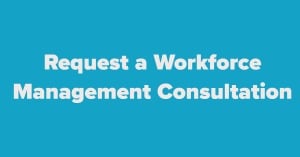The Detrimental Impact of the Physician Shortage on Patient Care Access
Physician and nursing shortages have become a major cause for concern affecting hospitals, clinics, and potential patients. The draining work environment and subsequent lifestyle physicians and nurses are subjected to, have led to physician burnout and an increased turnover rate which hospitals and clinics cannot afford. It is imperative that they find a way to retain these crucial healthcare workers to further improve patient access to much-needed health care. The physician shortage has plagued the healthcare industry for some time and is expected to continue growing exponentially by 2030, severely limiting patient care access.
A study released in March 2017 by the AAMC revealed that the United States could potentially find itself with a physician shortage upwards of 104,900 physicians by 2030. Due in part to population growth, an increase in the number of aging Americans and retirement of practicing doctors, this potential shortage has healthcare providers, hospitals, clinics, and private practices racing to discover and acquire long-lasting talent. Hopefully, this concerning effort will result in keeping the industry afloat throughout the next two decades, ensuring patient care access remains readily available for those who need it.
How Will This Physician Shortage Affect Patient Care?
Should a physician shortage persist for a sustained period of time, it would prove detrimental to patients and doctors. Patients will experience longer wait times at hospitals. It will become more difficult for patients to be admitted. Physicians and doctors will not be able to adequately treat patients due to extended shifts and patient overload. Ultimately, a physician shortage will negatively and dramatically impact the overall quality of healthcare across the United States.
 While patients have always faced significant barriers to patient care access, this shortage will produce more widespread and long-lasting effects. A physician shortage not only affects hospital patients but even those who regularly visit their primary care physicians and family doctors. Overall patient satisfaction will drop and the risk for negative health consequences will rise.
While patients have always faced significant barriers to patient care access, this shortage will produce more widespread and long-lasting effects. A physician shortage not only affects hospital patients but even those who regularly visit their primary care physicians and family doctors. Overall patient satisfaction will drop and the risk for negative health consequences will rise.
The Association of American Medical Colleges (AAMC) has been urging members of the United States Congress to design and craft federal initiative programs that extend outreach to hospitals and medical schools in order to help support them during this predicted physician shortage. The AAMC is hoping that the US federal government can help, at the very least, to alleviate or reverse some of the adverse effects the physician and doctor shortage will continue to have on patient care access. In addition, they hope the initiatives can increase medical knowledge and attract younger generations to the field of medicine through educational programs.
The Physician Shortage Study and Debate
While patient care access has decreased in recent years due to a number of factors, some argue that there really is no physician shortage whatsoever. For instance, The Institute of Medicine released a study in 2014 claiming that there was no statistical shortage of physicians or doctors in the United States. However, the system was criticized as being extremely inefficient, therefore possibly skewing the accuracy of the results. The study reflected poor ratings in patient satisfaction, physician workplace satisfaction, and patient care access.
In addition, it was suggested that new, innovative, and emerging technologies had not previously been accounted for. In essence, it was proposed that any decrease in the number of physicians and doctors in the United States could be due to new medical technologies negating the necessity for a human physician, in some cases.
Regardless, more research should be conducted to determine if there really is a shortage, how small or large it is, and the impact this suggested physician shortage is having and could continue to have on patient care access. For individual healthcare facilities to have an influence on physician burnout, being aware of what’s important to your contingent healthcare providers to ensure greater workforce satisfaction would be wise.




